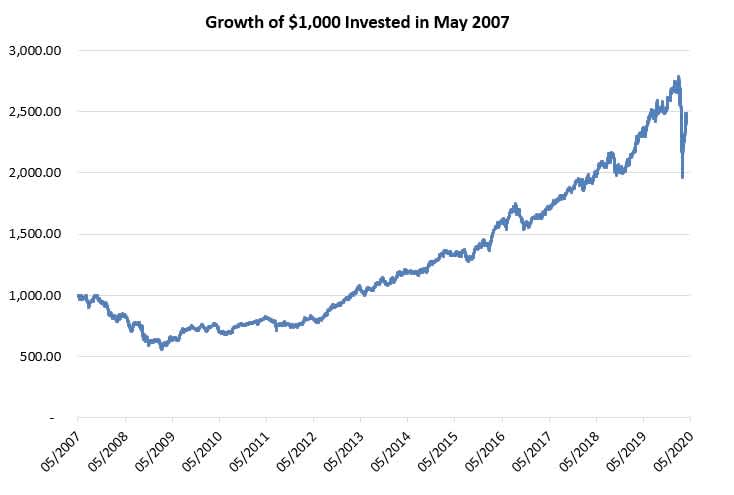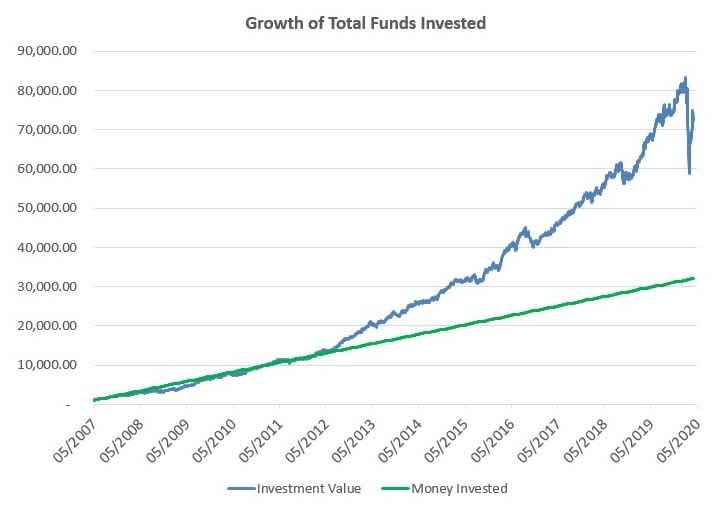Theodore Roosevelt supposedly said “The more you know about the past, the better prepared you are for the future.” And looking back through history can provide perspective, and insights into investing during tough times.
This quote is extremely relevant right now, and especially to younger investors like me, as while most of our investment team were working in the industry during the Global Financial Crisis, I was still a student.
I thought it would be a worthwhile exercise to crunch some numbers.
From peak to trough in the Global Financial Crisis (GFC), investors in the NZX50 Index (an index comprised of 50 companies listed in New Zealand) lost 44% of their investment. This is a staggering loss to comprehend, although perhaps not quite so in today’s fickle market environment.
To illustrate the investment returns during and after the GFC using a case study of a hypothetical young investor, based on genuine historical returns.
A young investor named Raphael decides to put $1,000 into the stock market in May 2007, the peak of the market. She discusses this decision with her financial advisor. They note, because Raphael has an investment time horizon of 10 years, this investment is acceptable.
By March 2009, the world is in crisis. Unemployment has skyrocketed and financial markets have seized up. Raphael’s $1,000 has dropped in value to $558. Raphael is extremely worried so decides to call her advisor. Her advisor reminds her of her initial strategy and 10 year time horizon. Reassured, Raphael doesn’t sell and holds onto her investment.
Fast-Forward to March 2013, just 4 years after the stock market bottomed, Raphael has regained all of her losses. Her investment is back to where she started; $1,000.
By March 2015 Raphael has made 36% on her initial investment. Her $1,000 is now worth $1,360.
Today, despite fears from the Greek financial crisis, China slowdown, Brexit, trade wars and now a global pandemic, Raphael’s investment is now worth $2,404, a 140% return. You can see the growth of Raphael’s $1,000 below:

What if, despite the global panic and negative headlines, Raphael had continued to invest more in the market during the GFC? Let’s do the math.
Raphael starts her investment journey in May 2007 and puts $1,000 in straight away. On the last day of each month she contributes $200 towards her investment. This means during the GFC she is purchasing stocks as the market is falling, a very scary, but smart, thing to do!
As the market recovers, Raphael’s investments recover more quickly. This is because she has been purchasing more shares at a cheaper price.
By January 2011, Raphael has recovered all the money she has invested. This is more than 2 years earlier than the NZX 50 recovers to its price pre GFC.
By March 2015 she has invested $19,800 which is now worth $31,650! A 60% increase!
Today, Raphael would have invested a total of $32,200 which is worth $72,450.
You can see the growth of Raphael’s investment during the period below:

Both of these examples illustrate two fundamental principles of investing:
Your investment timeframe – and your actual time in the market
Sticking to your investment strategy.
While it can be tempting to sell out of long term investments or switch to a more conservative strategy, the long term damage of this can be significant and it may not be the best approach if you still have time on your side.
If you are a KiwiSaver investor and contributing through your salary or wages, you don’t need to think about continuously investing in the market month in month out, your KiwiSaver contributions do it for you! Similar to Raphael in the example above, as the market falls you will be purchasing cheaper units in our KiwiSaver Funds. When the market recovers, your balance will recover more quickly.
The key message from the GFC is stick to your investment strategy and as much as possible block out the noise. Your investments will recover and, in all likelihood, generate superior returns over the long term.
Of course that is all true if your objectives and timeframes remain the same.
If they have changed, or if you are feeling worried please get in touch with one of our team. It is better to seek advice than make a rash decision you might regret later on!

